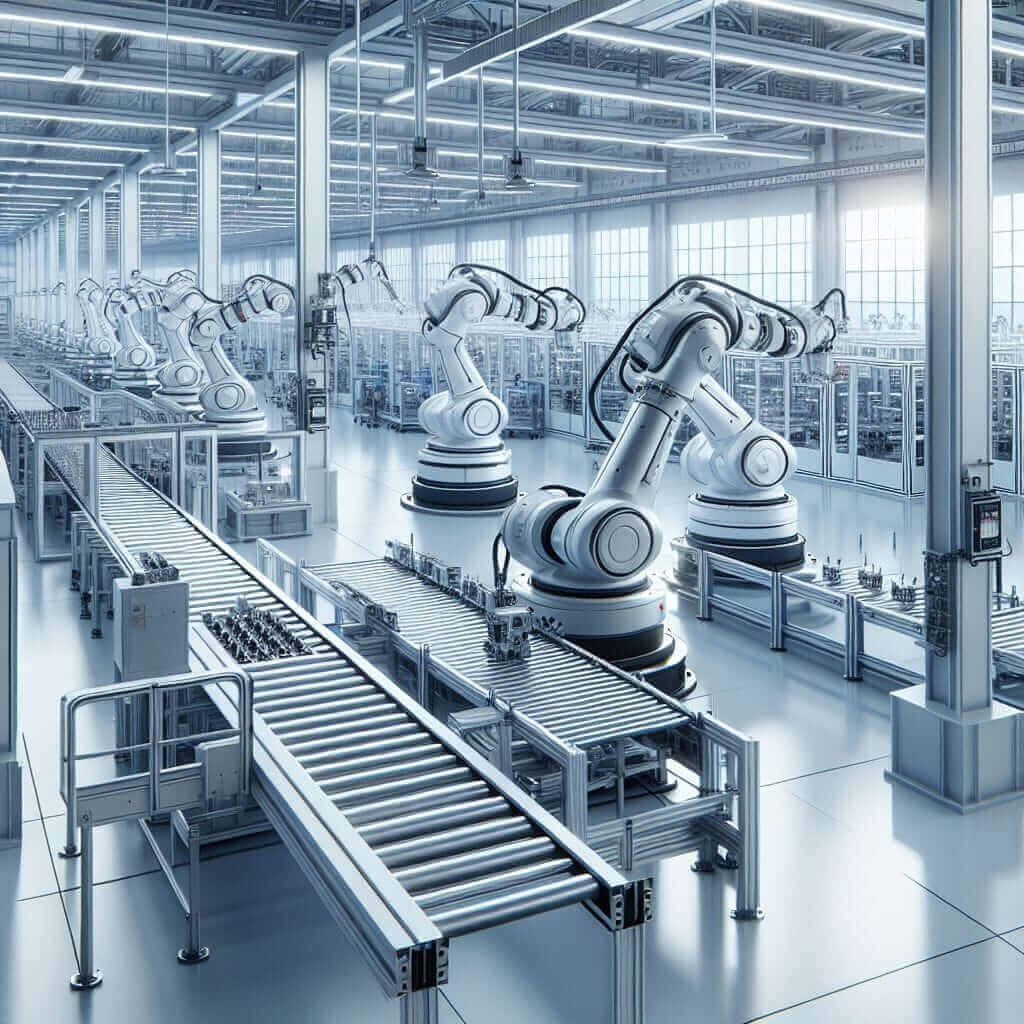The IELTS Reading test is a critical component of the IELTS examination, designed to assess your ability to comprehend, infer and interpret written English. For those preparing for the IELTS exam, understanding various topics and having practice tests based on these topics is very crucial. One such significant and frequently discussed topic is “How does automation influence job creation?” with its relevance stemming from the increasing impact of technology in our daily lives and work settings. In recent IELTS exams, topics related to technology, innovation, and their socio-economic impact have been quite common, making it likely that such themes will reappear in future exams.
Main Content
Preparation and Practice Test
To assist you in your IELTS preparation, we have created a practice IELTS Reading passage based on the topic “How does automation influence job creation?” This passage reflects the format and complexity you might encounter during the actual test.
Reading Passage: Medium Text
Title: The Influence of Automation on Job Creation
Automation has been steadily transforming industries and job markets worldwide. While there are concerns about job displacement, it is essential to understand the nuances of how automation affects job creation.
Automation refers to the use of technology to perform tasks that were previously done manually. This shift is evident in various sectors, including manufacturing, healthcare, and services. For instance, in manufacturing, robots and automated systems can enhance productivity and efficiency, leading to economic growth. However, this growth often comes with significant restructuring in the labor market.

Studies show that tasks prone to automation are usually repetitive and predictable. Therefore, jobs involving higher levels of creativity and complex problem-solving are less likely to be automated. As a result, while some jobs are displaced, new roles are created, particularly in areas requiring technological proficiency.
One notable example is the advancement in artificial intelligence (AI) and machine learning, which has given rise to new job categories such as data analysts, AI specialists, and cybersecurity experts. These new roles often require higher levels of education and training, emphasizing the need for upskilling and reskilling the workforce.
Moreover, automation can lead to the development of entirely new industries. For instance, the advent of the internet and digital technology created the e-commerce sector, providing massive employment opportunities. Similarly, emerging technologies like renewable energy and biotech are expected to generate new jobs, offsetting some of the reductions in traditional roles.
However, the impact of automation is not uniformly positive. It can increase unemployment in regions or sectors with less capacity to adapt, exacerbating economic inequalities. Policymakers must therefore promote equitable growth by investing in education, retraining programs, and supportive policies to cushion the transition for displaced workers.
In conclusion, while automation can displace certain jobs, it simultaneously creates new opportunities. The key lies in effectively managing the transition to ensure that the benefits of automation are widely shared.
Questions
Identifying Information (True/False/Not Given)
- Automation exclusively leads to job displacement.
- Jobs requiring creativity are less likely to be automated.
- New job categories such as AI specialists have emerged due to advancements in AI and machine learning.
- Automation has no impact on economic inequalities.
- Investment in retraining programs can help manage the transition caused by automation.
Matching Information
Match the following impacts of automation with their corresponding descriptions:
-
Enhances productivity.
-
Leads to job displacement.
-
Creates new industries.
-
Requires workforce upskilling.
-
Increases economic inequalities.
- A. Economic Growth
- B. New Roles in Technology
- C. E-commerce Development
- D. Predictable Tasks Automation
- E. Regional Unemployment
Answer Key
Identifying Information (True/False/Not Given)
- False – The passage states that automation leads to job creation as well as displacement.
- True – The passage mentions that creative jobs are less likely to be automated.
- True – New roles like data analysts and AI specialists have emerged due to advancements in AI.
- False – The passage indicates that automation can exacerbate economic inequalities.
- True – The passage emphasizes the importance of retraining programs to manage the transition.
Matching Information
- A. Economic Growth – Enhances productivity.
- D. Predictable Tasks Automation – Leads to job displacement.
- C. E-commerce Development – Creates new industries.
- B. New Roles in Technology – Requires workforce upskilling.
- E. Regional Unemployment – Increases economic inequalities.
Common Mistakes
- Misinterpreting the context of the passage.
- Skipping important details in the text.
- Not managing time effectively, leading to incomplete answers.
- Comprehension issues with complex vocabulary and sentence structures.
Vocabulary
- Automation (noun): /ˌɔːtᵊˈmeɪʃən/ – The use of technology to perform tasks without human assistance.
- Displacement (noun): /dɪsˈpleɪsmənt/ – The removal of someone or something from its original position.
- Reskilling (noun): /riːˈskɪlɪŋ/ – The process of learning new skills to do a different job.
- Inequalities (noun): /ɪˌnɛkwəˈlɪtiz/ – The state of not being equal, especially in status, rights, and opportunities.
- Emerging (adjective): /ɪˈmɜrdʒɪŋ/ – Becoming apparent or prominent.
Grammar Insights
-
Relative Clauses: Used to give additional information about a noun.
- Example: “Automation refers to the use of technology that performs tasks previously done manually.”
-
Passive Voice: Often used in academic writing to emphasize the action over the subject.
-
Example: “Robots and automated systems are used to enhance productivity.”
-
Structure: Subject + Auxiliary Verb (be) + Past Participle
-
Example: “The new rules were implemented last year.”
-
Advice for IELTS Reading
- Practice Regularly: Consistent practice with a variety of passages will improve your reading speed and comprehension.
- Time Management: Allocate the proper amount of time for each section during practice to simulate exam conditions.
- Understand Question Types: Familiarize yourself with different types of questions to know what to expect.
- Improve Vocabulary: Enhance your lexicon to better understand complex texts.
- Develop Skimming and Scanning Skills: Quickly identifying key information is crucial for managing the time-sensitive nature of the test.